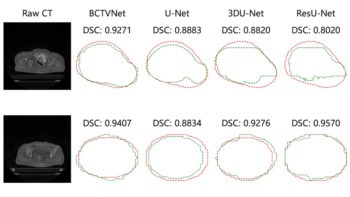Sand dunes are a ubiquitous feature of desert landscapes from the Middle East to Mars. But the physics that governs the behaviour of giant dunes is poorly understood because it is difficult to study them under controlled conditions. Now Pascal Hersen and colleagues at the École Normale Supérieure in France have created tiny underwater dunes in the lab that closely mimic their larger cousins. The team hopes that its technique will help scientists to predict the movement of dunes near towns and shed light on conditions on Mars (P Hersen et al 2002 Phys. Rev. Lett. 89 264301-1).
Crescent-shaped dunes known as barchans can grow up to 100 metres in length, but researchers have never found one shorter than ten metres. This minimum length is thought to arise from an interaction between the wind and the grains of sand.
The wind that blows across a desert carries sand, and when this wind meets the inclined plane of a dune, it speeds up slightly. This allows the wind to pick up more sand from the dune until the wind is ’saturated’ again. At this point, the wind is collecting and depositing equal amounts of sand, so the size of the dune is stable.
But if the dune is less than ten metres long, the wind does not have time to reach saturation: instead, it collects more sand than it deposits and the dune gets blown away. This means that studies of small sand piles in wind tunnels cannot be scaled up to explain the behaviour of real wind-blown dunes.
Hersen and co-workers wanted to recreate this critical length on a smaller scale, and they suspected that it was linked to the viscosity of the air. To mimic the sand, the team filled a tray with micrometer-sized glass beads, and immersed it in water to simulate the air. Using a motor, the researchers repeatedly jerked the tray in one direction and slowly moved it back, to create the effect of intermittent wind on sand. After a few minutes, the team found that centimetre-sized barchans – a thousand times smaller than the real thing – formed from the beads.
The team compared the size, shape and motion of their miniature dunes with similar data from natural barchans, and found that they matched almost perfectly. Hersen and colleagues point out that the glass beads in their study move differently to the sand grains in a real dune. But they say that their simulations are accurate anyway – and this is the most important point for scientists struggling to predict how large sand dunes behave.



